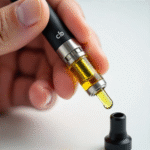In the intricate world of medicine, clear and concise communication is paramount. This often relies on a specialized language, including a host of abbreviations. One such term you’ll frequently encounter in patient records and clinical discussions is ETOH. But what exactly does ETOH signify? Let’s break it down. This article aims to demystify the ETOH medical abbreviation, exploring its meaning, where it comes from, and why understanding it is so vital in healthcare settings. Whether you’re a patient trying to understand your chart or a budding healthcare professional, grasping the meaning and usage of ETOH is truly fundamental.
Deciphering the Ethanol Chemical Abbreviation
At its core, the ETOH abbreviation stands for ethanol. This is the specific type of alcohol found in alcoholic beverages – think beer, wine, and spirits. The abbreviation itself is rooted in chemistry, directly reflecting ethanol’s chemical structure. “Et” is shorthand for the ethyl group (C2H5), while “OH” represents the hydroxyl group (OH). This chemical shorthand provides a quick and efficient way for medical professionals like doctors and nurses to document information related to alcohol use or presence.
Chemically speaking, ethanol is a relatively simple compound, yet its effects on the human body are anything but simple. It’s a clear, volatile, and highly flammable liquid that mixes easily with water. Beyond its role in drinks, ethanol has important applications in industry and medicine, often used as a solvent or disinfectant.
ETOH: Its Role in Medical Terminology
Within the medical field, the ETOH abbreviation is predominantly linked to alcohol consumption and its various physiological impacts. When you spot ETOH noted in a medical chart, it typically pertains to a patient’s history of alcohol use, their current blood alcohol level, or medical conditions stemming from alcohol. For instance, a chart entry might read “ETOH intoxication,” indicating the patient is currently under the influence, or “positive for ETOH,” confirming alcohol in their system.
Essentially, clinicians use this abbreviation as a concise way to refer to anything connected to ethanol or alcohol. This encompasses documenting a patient’s drinking habits, the health consequences alcohol has had on them, or even the symptoms they experience during alcohol withdrawal. It’s also commonly used when discussing issues like ETOH abuse.
Ethanol vs. Other Alcohols: A Critical Distinction
While ethanol is indeed a type of alcohol, it’s absolutely crucial to differentiate it from other forms, notably methanol and isopropanol. Ethanol, or ethyl alcohol, holds the unique status of being the only alcohol variant that humans can safely consume (and even then, only in moderation!). Methanol and isopropanol, in contrast, are highly toxic and can cause severe, even fatal, health consequences if ingested.
Methanol, often referred to as wood alcohol, is widely used in industrial processes and as a solvent. Isopropanol, commonly known as rubbing alcohol, is primarily used topically as a disinfectant. These substances are dangerous and must never be consumed internally. Understanding this fundamental difference is vital for preventing accidental poisoning and promoting public safety.
The Physiological Impact of ETOH on the Body
Ethanol exerts a wide range of effects on the body, manifesting in both the short and long term. In the immediate aftermath of consumption, alcohol can lead to impaired judgment, reduced motor coordination, and slowed reaction times. It can also induce feelings of relaxation or euphoria.
However, the picture changes dramatically with excessive or chronic consumption. Long-term heavy drinking is associated with serious health detriments, including significant liver damage (such as cirrhosis), cardiovascular issues, neurological impairment, and an elevated risk of various cancers. As highlighted by organizations like the National Institute on Alcohol Abuse and Alcoholism (NIAAA), persistent alcohol misuse is a major contributor to chronic health problems.
Identifying ETOH Abuse and Accessing Support
Ethanol, the active ingredient in alcoholic beverages like beer and wine, carries the potential for addiction when consumed frequently or in large quantities. This condition is commonly known as alcoholism and clinically termed alcohol use disorder. Recognizing the signs of ETOH abuse is a critical first step towards seeking necessary help.
Key indicators of alcohol abuse include consistently drinking more than intended, finding it difficult to cut back, dedicating substantial time to drinking or recovering from its effects, and experiencing withdrawal symptoms when not drinking. If you or someone you know is grappling with alcohol abuse, remember that numerous resources are available. The Substance Abuse and Mental Health Services Administration (SAMHSA), for instance, offers a national helpline and extensive online information to guide you.
Looking Ahead: The Evolving Understanding of ETOH
As medical science continues to advance, our understanding of ETOH’s impact on human physiology will only deepen. Future research promises new insights into the long-term effects of alcohol consumption and holds the potential for more effective strategies to treat alcohol-related disorders. Staying informed about the latest scientific findings is essential for individuals to make empowered decisions regarding their health and overall well-being.
Furthermore, ongoing public health efforts to educate communities about the risks associated with alcohol abuse are indispensable. Promoting responsible drinking habits and reducing instances of harmful consumption require widespread awareness and accessible support systems. By enhancing public understanding and ensuring resources are readily available, we contribute to building a healthier and safer society for everyone.
Ultimately, understanding the ETOH medical abbreviation goes far beyond simply knowing what the letters stand for. It’s about grasping the broader context of alcohol’s profound influence on both individual health and societal welfare. ETOH is shorthand for ethanol, the alcohol found in drinks. Being aware of its effects, its potential for abuse, and the clear distinction between ethanol and other alcohols is knowledge everyone should possess. Stay informed, make responsible choices regarding alcohol, and never hesitate to seek help if needed.
Now that you’re clued into the meaning of the ETOH medical abbreviation, consider sharing this article. Spreading this knowledge helps others understand important health information! Feel free to leave your thoughts or questions about ETOH and related health topics in the comments below.
ETOH’s Impact on Mental Health
It’s well-established that alcohol can significantly affect mental health. It often exacerbates existing conditions such as depression and anxiety. While some individuals may initially use alcohol to cope with stress, this can unfortunately lead to a damaging cycle of increased abuse and worsening mental health issues.
Addressing both alcohol abuse and mental health concerns simultaneously is crucial. Effective treatment plans typically integrate strategies for managing both aspects. Therapeutic interventions and appropriate medication can play a vital role in helping individuals manage these complex conditions.
ETOH and Pregnancy Risks
Consuming alcohol during pregnancy poses severe risks. It is a leading cause of Fetal Alcohol Syndrome (FAS), which can result in permanent birth defects and significant developmental problems in the child.
Medical consensus is clear: there is no amount of alcohol considered safe to drink during pregnancy. Women who are pregnant or planning to conceive should abstain entirely from alcohol. Importantly, support and resources are readily available for pregnant individuals who may be struggling with alcohol abuse.
ETOH and Medication Interactions
Alcohol has the potential to interact with a wide range of medications. These interactions can alter how effectively the drugs work, sometimes rendering them less potent or, conversely, increasing their effects. Crucially, combining alcohol with certain medications can significantly elevate the risk of dangerous side effects.
Always, and without exception, discuss alcohol consumption with your doctor or pharmacist when taking any medication. Be proactive in asking about potential interactions. This simple step is vital for your safety and overall health outcomes.
Understanding Blood Alcohol Content (BAC)
Blood Alcohol Content (BAC) is a standard measurement quantifying the amount of alcohol present in a person’s bloodstream. BAC is frequently used legally to determine intoxication, particularly concerning driving; the legal limit for operating a vehicle is commonly set at 0.08% in many places.
Numerous factors influence BAC levels, including an individual’s body weight, gender, and how much food they’ve consumed. It’s important to understand that even relatively small amounts of alcohol can impair cognitive function and driving ability. The safest approach is always to avoid drinking entirely if you plan to drive.
ETOH’s Effects on the Liver
The liver plays the primary role in metabolizing alcohol in the body. Unfortunately, chronic heavy drinking places immense strain on this organ and can lead to substantial liver damage. This damage can progress to serious liver diseases, including fatty liver disease, alcoholic hepatitis, and cirrhosis.
Cirrhosis represents a severe, often irreversible, form of liver scarring that can result in liver failure and numerous other health complications. Early detection and appropriate medical treatment are key factors in managing alcohol-related liver disease and potentially slowing its progression.
Strategies for Preventing ETOH Abuse
Education stands as a cornerstone in preventing alcohol abuse. Ensuring people are well-informed about the risks associated with excessive alcohol consumption empowers them to make healthier choices. Parents, educational institutions, and community programs all have a vital role to play in disseminating this crucial information.
Beyond education, promoting responsible drinking habits is equally important. This includes emphasizing the importance of drinking in moderation, understanding personal limits, and avoiding dangerous practices like binge drinking. Furthermore, ensuring that support systems and resources are easily accessible for those who may be vulnerable or already struggling is paramount.
The Genetic Component in ETOH Addiction
Scientific research indicates that genetics can contribute to an individual’s susceptibility to alcohol addiction. Some people may have a higher genetic predisposition, making them potentially more vulnerable to developing dependence compared to others.
However, it’s essential to recognize that genetics is not the sole determinant. Environmental factors, personal experiences, and individual choices also significantly influence the likelihood of developing alcohol addiction. Understanding the potential role of genetics can aid in identifying individuals who might be at higher risk, informing both prevention strategies and personalized treatment approaches.
Social Factors Influencing ETOH Use
Social dynamics play a considerable role in shaping alcohol consumption patterns. Factors such as peer pressure, prevailing cultural norms around drinking, and even alcohol advertising can influence an individual’s habits and attitudes towards alcohol.
Addressing these broader social factors is a crucial part of efforts to reduce alcohol abuse. This involves promoting positive social norms around alcohol, fostering environments where responsible choices are encouraged, and critically evaluating the influence of advertising and media portrayals of alcohol use.
ETOH’s Effects on the Brain
Alcohol is a psychoactive substance that directly impacts the brain. It alters brain chemistry and disrupts normal function. Prolonged and heavy alcohol abuse can lead to significant, sometimes irreversible, damage to brain structures and pathways.
Alcohol-induced brain damage can manifest as problems with memory formation and recall, impaired cognitive function, and changes in mood and behavior. While some damage may be permanent, therapeutic interventions and abstinence can often lead to improvements in brain function and overall well-being.
Accessing Resources for ETOH Addiction
For individuals grappling with alcohol addiction, a wealth of resources is available to provide support and treatment. These include specialized treatment centers offering various levels of care, peer-led support groups, and comprehensive online resources. As mentioned earlier, SAMHSA is an excellent starting point, offering a national helpline and a vast repository of information.
Taking the step to seek help is a sign of strength, not weakness. Recovery from alcohol addiction is absolutely possible with the right support system in place. Remember, there are compassionate professionals and supportive communities ready to help you on your journey towards recovery.
Supplementary Questions and Answers:
Question 1: What is the chemical difference between ethanol and other types of alcohol?
Ethanol (chemically written as C2H5OH), also known as ethyl alcohol, possesses a specific molecular structure featuring a two-carbon chain linked to a hydroxyl (-OH) group. In contrast, other alcohols like methanol (CH3OH, with a single carbon) and isopropanol (C3H8O, with a three-carbon chain and the -OH group attached to the middle carbon) have distinct chemical structures. It is precisely this difference in molecular arrangement that dictates their properties, rendering ethanol suitable for consumption (in moderation) while methanol and isopropanol are highly toxic and dangerous if ingested.
Question 2: How is the ETOH medical abbreviation used in hospital settings?
In a hospital environment, the ETOH medical abbreviation serves as a crucial shorthand for documenting a patient’s alcohol status and its relevance to their health and treatment plan. This information is vital for accurate diagnosis, appropriate care, and monitoring. Here are a few common ways ETOH might appear in a patient’s medical chart or notes:
- ETOH positive: This indicates that laboratory tests have detected the presence of alcohol in the patient’s system at the time of assessment.
- ETOH intoxication: This clinical term describes a patient who is currently exhibiting the signs and symptoms associated with being intoxicated by alcohol.
- History of ETOH abuse: This note signifies that the patient has a documented history of alcohol misuse, dependence, or addiction, which is important context for their overall health profile.
Question 3: What are the long-term health risks associated with chronic ETOH abuse?
Chronic, heavy ETOH abuse can lead to a cascade of severe and often irreversible health problems affecting multiple organ systems. Some of the most significant long-term risks include:
- Extensive Liver Damage: This can range from fatty liver disease and alcoholic hepatitis to the severe, scarring condition known as cirrhosis, potentially leading to liver failure.
- Cardiovascular Disease: Chronic alcohol use contributes to conditions like high blood pressure (hypertension), various heart muscle diseases (cardiomyopathy), irregular heart rhythms (arrhythmias), and significantly increases the risk of stroke.
- Neurological Impairment: Long-term abuse can cause damage to the brain and nervous system, resulting in issues like memory deficits, cognitive decline, peripheral neuropathy, and specific neurological disorders like Wernicke-Korsakoff syndrome.
- Increased Cancer Risk: Studies have shown a clear link between chronic alcohol consumption and a higher incidence of certain cancers, including those of the mouth, throat (pharynx and larynx), esophagus, liver, breast, and colon.
Question 4: What are the symptoms of ETOH withdrawal?
When someone who is physically dependent on alcohol suddenly stops or significantly reduces their intake, they may experience ETOH withdrawal symptoms. The severity of these symptoms can vary greatly depending on the individual’s level of dependence. Common symptoms include:
- Physical tremors or shaking, particularly in the hands.
- Excessive sweating.
- Gastrointestinal distress, such as nausea and vomiting.
- Increased anxiety, restlessness, and irritability.
- Headaches.
- In more severe cases, withdrawal can lead to hallucinations, seizures, or a life-threatening condition known as delirium tremens (DTs), characterized by severe confusion, disorientation, rapid heart rate, and fever.
Question 5: What are the treatment options for ETOH addiction?
Treating ETOH addiction is a multifaceted process tailored to the individual’s specific needs, the severity of their dependence, and any co-occurring conditions. A comprehensive approach often includes a combination of the following treatment modalities:
- Medically Supervised Detoxification: This initial phase involves safely managing withdrawal symptoms under medical supervision, often with the help of medications to ease discomfort and prevent complications like seizures.
- Behavioral Therapies: Various forms of therapy, including individual counseling, group therapy sessions, and family therapy, are crucial for addressing the psychological aspects of addiction, identifying triggers, developing coping mechanisms, and addressing underlying issues.
- Medication-Assisted Treatment (MAT): Certain medications, such as naltrexone, acamprosate, and disulfiram, can be used in conjunction with therapy to help reduce cravings, manage withdrawal symptoms, and support long-term recovery.
- Support Groups: Participation in peer support groups like Alcoholics Anonymous (AA), SMART Recovery, or others, provides invaluable ongoing support, shared experiences, and accountability within a community setting.
- Rehabilitation Programs: Depending on the individual’s needs, treatment may take place in a structured inpatient (residential) setting or a less intensive outpatient program, offering varying levels of support and therapeutic services.






